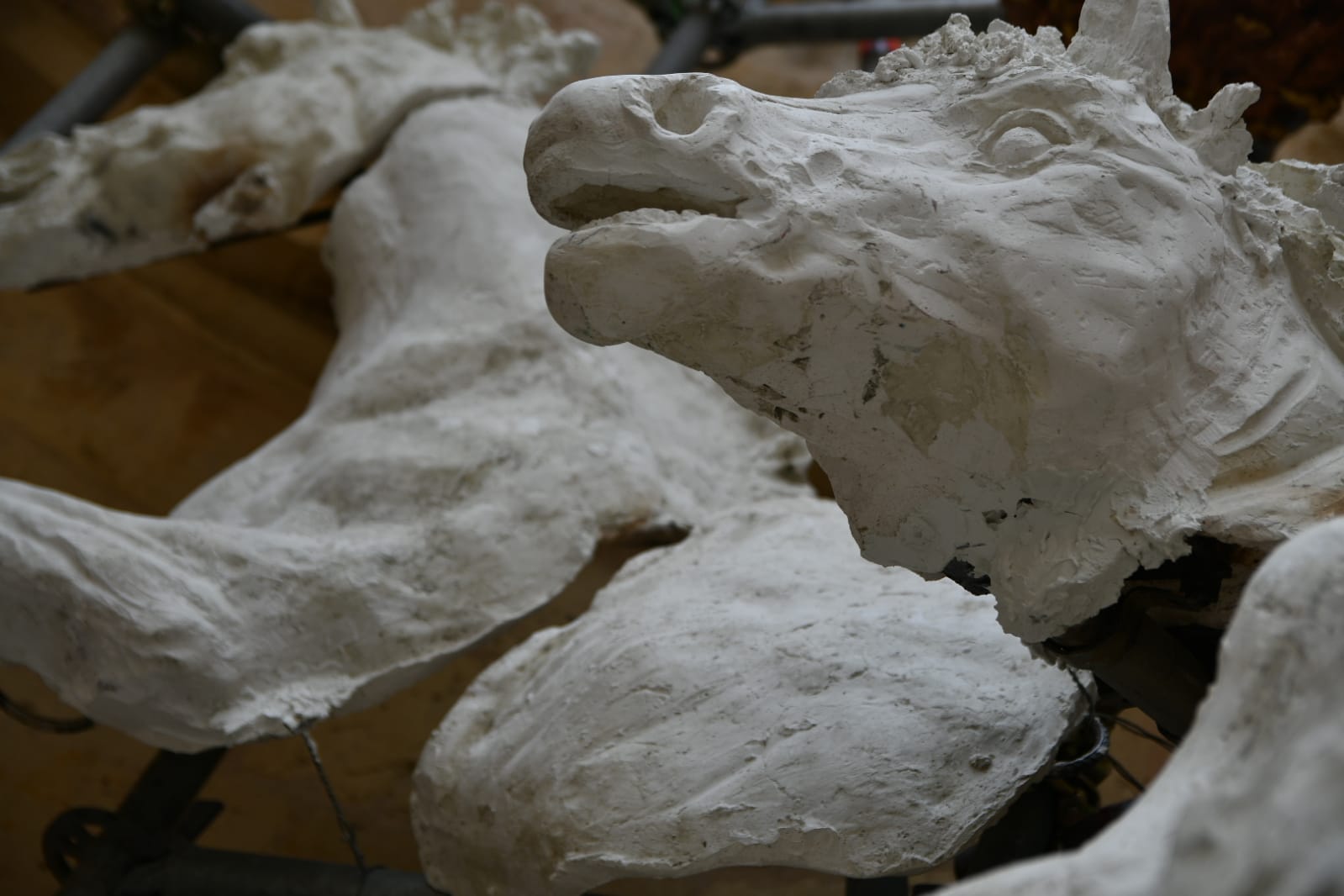Ħaġar Karmel is a sculptural intervention that echoes old traditions recounted by residents while adorning, with imposing decorations, the historic niche of Our Lady of Mount Carmel above the old fountain of the Biċċerija, often referred to as Is-Serp.
It also draws on the iconography of Prophet Elijah’s sacrifice on Mount Carmel.
This abstract work draws inspiration from primordial, primitive elements.
Victor Agius presented his work as a dialogue with the niche of Our Lady while the animals that are an intrinsic part of the scultpure directly refer to the Biċċerija, which was used as a slaughterhouse for some years during the time of the Knights.
This work was developed in dialogue with members of Our Lady of Mount Carmel feast association and was almost a co-creation where all the elements discussed have been reinterpreted into the scultpural intervention.
This intervention reflects one of the nine curatorial thematics of fuse, Ritual. The fountain and the niche of Our Lady of Mount Carmel, at the central axis of the Biċċerija and down the road from the Basilica of Our Lady of Mount Carmel, was more than just a source of water. Towards the end of the 19th Century, the entire fountain-niche arrangement was embellished with intricate decorations, making its architectural features almost non-recognisable. To this day, the band makes its way down to the Biċċerija in a procession, accompanying the statue of Our Lady, during the annual feast celebration. In the past, this vibrant atmosphere was also accompanied with the banter of children and young people throwing firecrackers, water and perlini.
Curated by Elyse Tonna, fuse is a collaborative visual arts and research project which explores and uncovers aspects of the intangible history and the intangible stories of the area.
